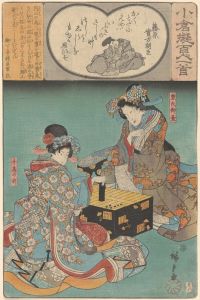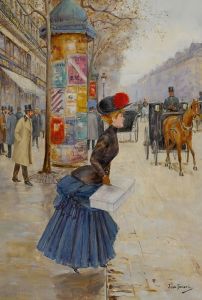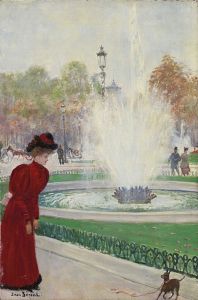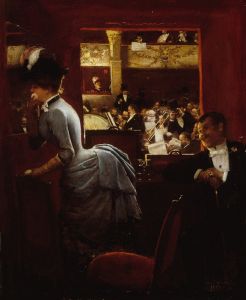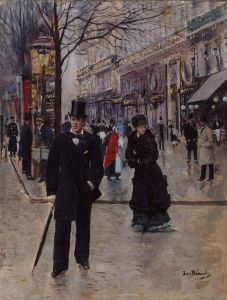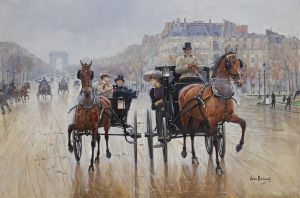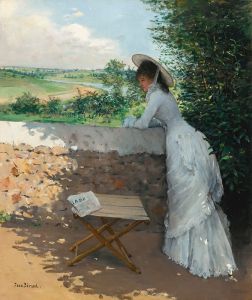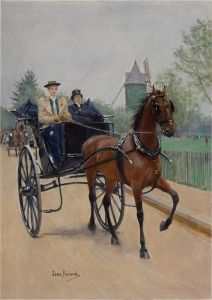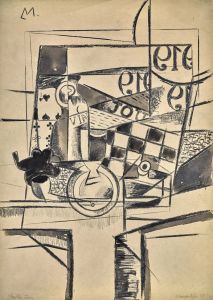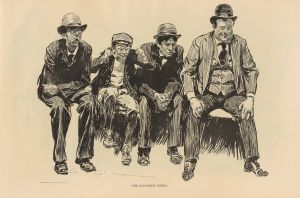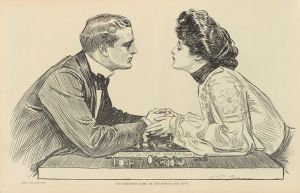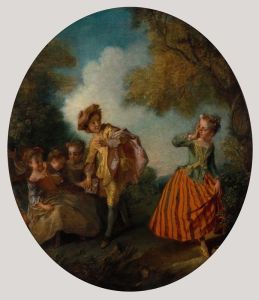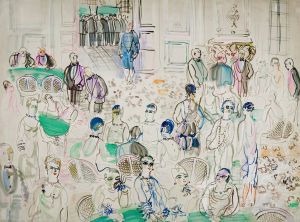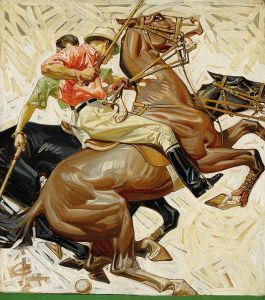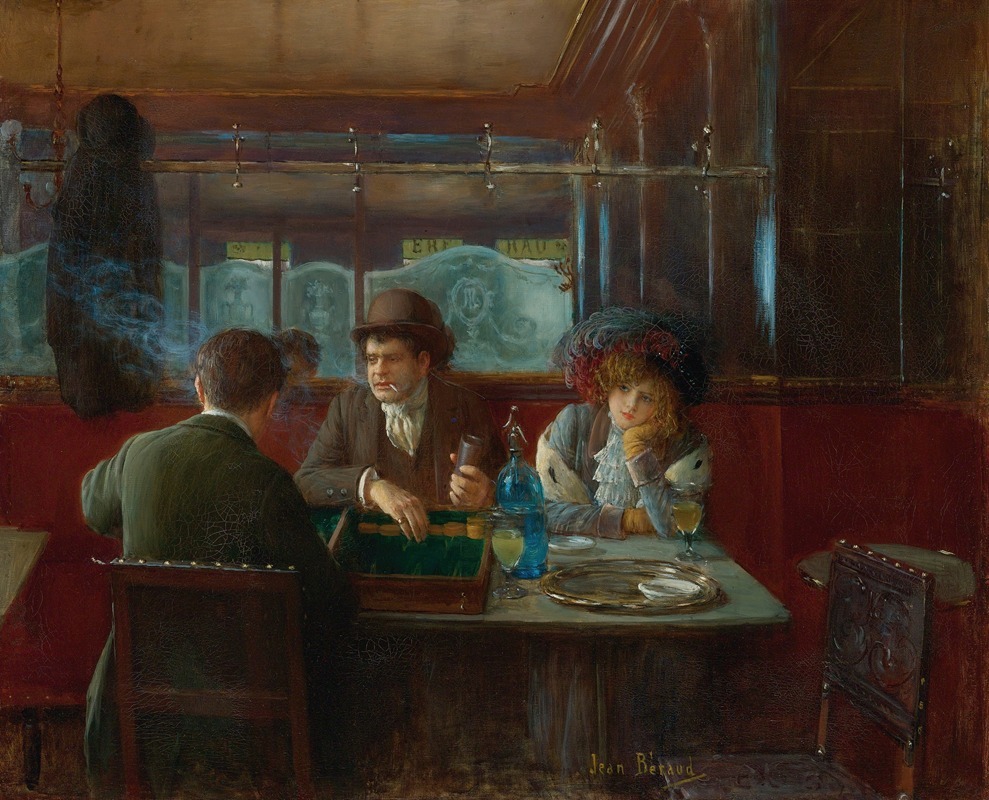
Backgammon At The Café
A hand-painted replica of Jean Béraud’s masterpiece Backgammon At The Café, meticulously crafted by professional artists to capture the true essence of the original. Each piece is created with museum-quality canvas and rare mineral pigments, carefully painted by experienced artists with delicate brushstrokes and rich, layered colors to perfectly recreate the texture of the original artwork. Unlike machine-printed reproductions, this hand-painted version brings the painting to life, infused with the artist’s emotions and skill in every stroke. Whether for personal collection or home decoration, it instantly elevates the artistic atmosphere of any space.
Jean Béraud, a notable French painter renowned for his depictions of Parisian life during the Belle Époque, created the painting "Backgammon At The Café." This artwork exemplifies Béraud's keen observation of the social dynamics and leisurely activities that characterized Paris in the late 19th and early 20th centuries. Although specific details about the painting's creation, such as the exact year it was painted, are not widely documented, it is consistent with Béraud's broader body of work that captures the essence of Parisian society.
Béraud was born in Saint Petersburg in 1849 and moved to Paris with his family after the death of his father. He studied at the Lycée Bonaparte and later pursued art at the École des Beaux-Arts under the tutelage of Léon Bonnat. Béraud's career flourished in the vibrant cultural milieu of Paris, where he became known for his genre scenes that vividly portrayed the city's bustling streets, elegant cafés, and fashionable gatherings.
"Backgammon At The Café" is a testament to Béraud's skill in capturing the nuances of everyday life. The painting likely depicts a scene in one of Paris's many cafés, which were central to the city's social life. These establishments were not only places for dining and drinking but also served as venues for intellectual exchange, entertainment, and games. Backgammon, a game with ancient origins, was a popular pastime in Europe and would have been a common sight in such settings.
In this painting, Béraud's attention to detail is evident in the depiction of the figures, their attire, and the café's interior. The individuals engaged in the game of backgammon are portrayed with a sense of realism and character, reflecting Béraud's ability to convey personality and mood through his art. The use of light and shadow, along with the composition of the scene, draws the viewer into the intimate atmosphere of the café, inviting them to observe the interactions and emotions of the players.
Béraud's work is often associated with the Impressionist movement, although he maintained a more realistic style compared to some of his contemporaries. His paintings provide valuable insights into the cultural and social fabric of Paris during a period of significant change and modernization. Through works like "Backgammon At The Café," Béraud offers a window into the leisurely pursuits and social rituals that defined the era.
Today, Jean Béraud's paintings are appreciated for their historical significance and artistic merit. They are housed in various museums and private collections, where they continue to be studied and admired for their contribution to the understanding of Parisian life in the Belle Époque. "Backgammon At The Café" remains a fine example of Béraud's ability to capture the spirit of his time, offering viewers a glimpse into the world of 19th-century Parisian cafés and the timeless appeal of social games like backgammon.





